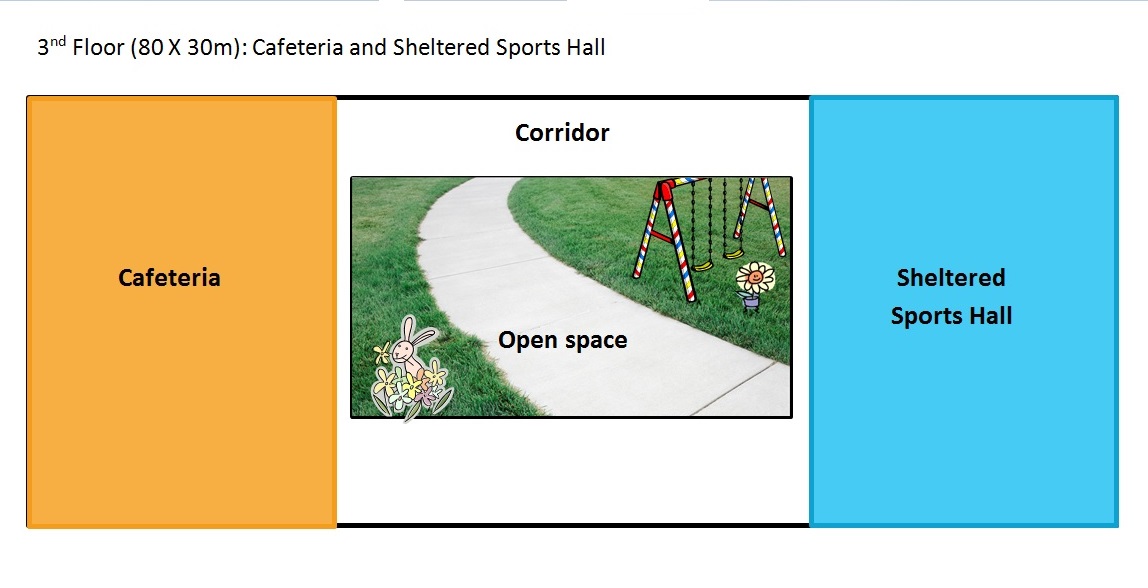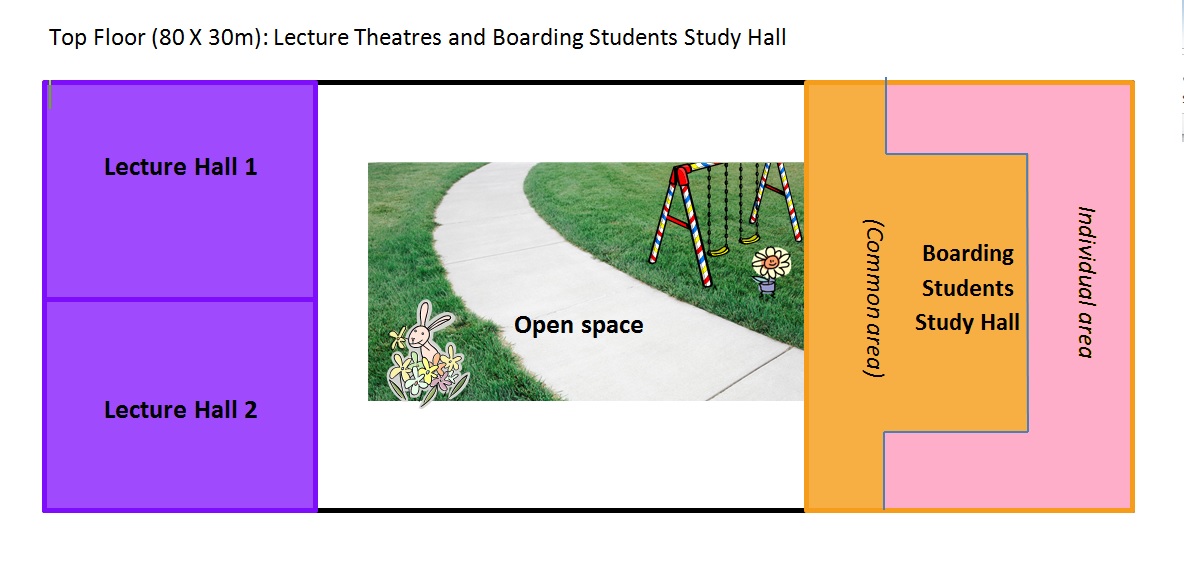1a) Roles and responsibility by each member
Gayle: Summarise research
Gloria: Editing
Jenny: Brainstorm for ideas and decided on amenities and features to include in the building
Joan: Design the building and decide on amenities and features to include in the building
Sydney: Brainstorm for ideas and decided on amenities and features to include in the building
Everyone: Research using information from trip to zero energy building and wrote description for each floor
1b) Research
What makes a building "green"?
A green building is a structure that is environmentally responsible and resource-efficient throughout its life-cycle. These objectives expand and complement the classical building design concerns of economy, utility, durability, and comfort.
Green buildings are designed to reduce the overall impact of the built environment on human health and the natural environment by:
- Efficiently using energy, water, and other resources
- Protecting occupant health and improving employee productivity
- Reducing waste, pollution and environment degradation
For example, green buildings may incorporate sustainable materials in their construction (e.g., reused, recycled-content, or made from renewable resources); create healthy indoor environments with minimal pollutants (e.g., reduced product emissions); and/or feature landscaping that reduces water usage (e.g., by using native plants that survive without extra watering)
Characteristics of a Green School
- Conserves energy and natural resources
- Saves taxpayer money
- Improves indoor air quality
- Removes toxic materials from places where children learn and play
- Employs day-lighting strategies and improves classroom acoustics
- Employs sustainable purchasing and green cleaning practices
- Improves environmental literacy in students
- Decreases the burden on municipal water and wastewater treatment
- Encourages waste management efforts to benefit the local community and region
- Conserves fresh drinking water and helps manage stormwater runoff
- Encourages recycling
- Promotes habitat protection
What amenities should our Green building have?
- Solar panels → to convert sunlight into electricity to power the building
- Light pipes → to reflect sunlight into the building from the rooftop so that less artificial light will be needed to to light up the top floor
- Curved roof → to put the solar panels so that there is a bigger surface area for absorption of sunlight and also for easier maintenance
- Green roof → acts as a storm water retention to create a cooler microclimate since the plants can absorb large quantities of solar energy
- Light pipes (in the rooms) → reflects sunlight directly into the interior of a building through the pipe that sticks out of the building’s roof
- Air ducts placed on the floor
- East-west orientation → away from the sun, so less energy needed to cool the building
- Vegetable garden planted on the roof to reduce heat and also promote an earth with more vegetation
1d) Design of green building with detailed explanation of each of the features incorporated
Description: An open space provides natural sunlight for the students, eliminating the need for electrical lights on sunny days. The spaces also increases the amount of vegetation in the building (assuming the open space would be a garden), providing the students with an endless amount of fresh air.
Description: On this floor, the windows would be made of E-glass, a type of glass that has two layers and traps a layer of air between the gap. Since air is poor conductor of heat, heat would not enter the building easily because of the glass. This would thus reduce heat gain, keeping the building cool without the need for air-conditioning. The glass is also transparent, allowing maximum light to enter the building and hence reducing the need for electrical lights on a sunny day.
Description: As the canteen and sports hall are located on a higher level, the whole place would be better ventilated since there is more wind. As the cafeteria is build using an open space concept, there are no boundaries to prevent light from entering the area, thus reducing the need for electrical lights. The concept makes use of nature to fulfill our need for light and ventilation.
Description: On this floor, all the rooms would be air-conditioned. The air ducts would be placed on the floor. Cold air sinks and hot air rises, as cold air is denser than hot air. Therefore, placing the air conditioner on the floor reduces the interaction between the cold and hot air, reducing the energy used, as little or no energy is required to start the reaction. In the lecture room, butterfly lights would be used. It is capable of controlling the amount the light entering the room, thus making it a wise choice as lights can be dimmed when the projector is in use.
Outside the building
The building would not only include green features in the building, the external surroundings are implemented with various amenities. First of all, it would have a vertical garden on the walls. These gardens may help reduce heat gain and thus keep the walls cool. It would also have mirror light shafts on the sides on the building, so as to make use of solar energy to light up the building at night. The building would be built with an East-west orientation. Trees would also be planted on the East and West side of the building, minimising contact with the sun. Therefore, most of building would be facing away from the Sun, reducing any unnecessary heat gain.
The roof is an important part of the building. It is the best place to build solar panels, as it is the place that receives the most amount of sunlight. The shape of the roof is curved, to increase surface area to fit solar panels on it, as well as for ease of maintenance. Also, as the roof is curved, when there is rain, the rain that falls on the roof would slide down, and in the process, wash and clean the solar panels.There would also be a small scale garden on the roof to reduce heat gain as it is one of the areas in the building that is exposed the most to sunlight. Besides, a green garden is grown on the roof to reduce transfer of heat into the building.